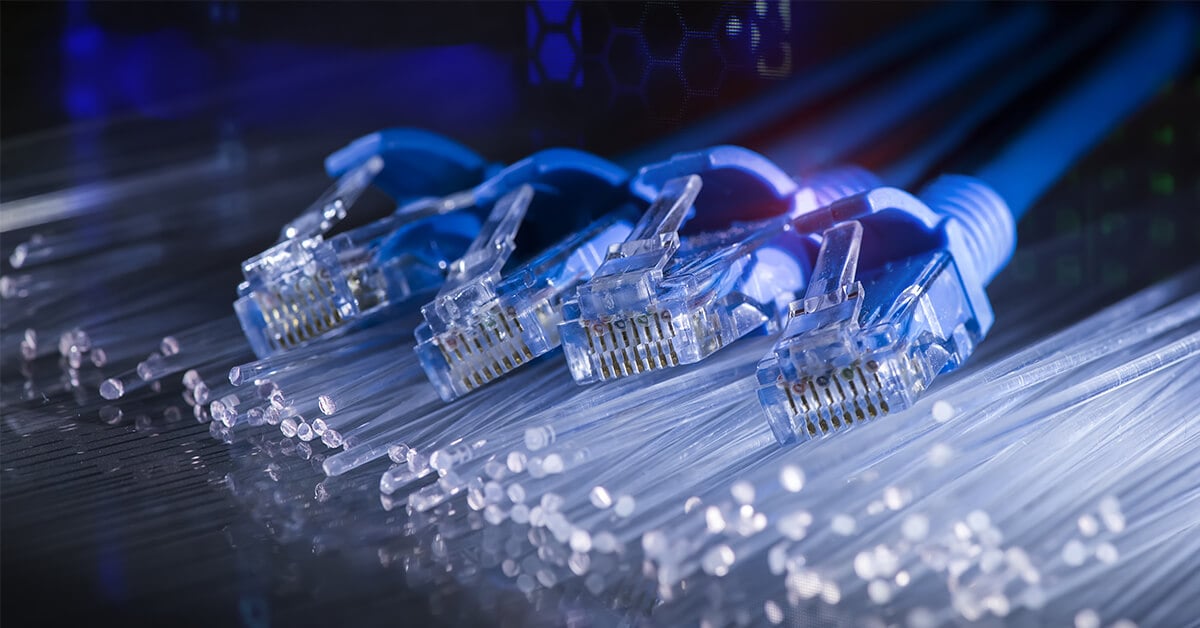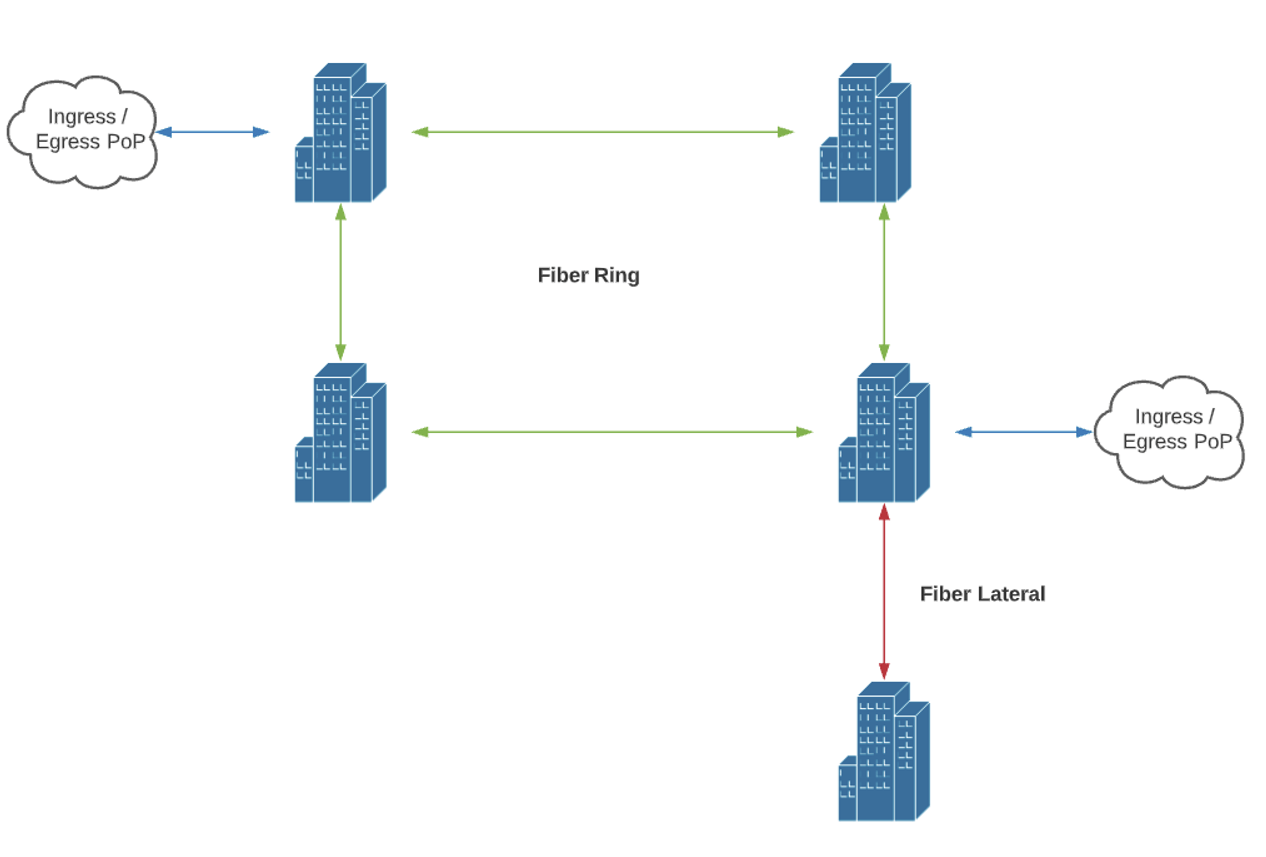Fiber Ring Network or Lateral: Which is Better for a Class A Office Building?

Why should you concern yourself with Fiber Ring Networks or Fiber Laterals?
Well, if you’ve ever bought a home before, you want to know more than just the number of bedrooms and bathrooms, right? Nowadays, potential buyers want to know if good Internet access is available in the neighborhood. After all, the last thing you want to do is buy your "dream home" and then learn you have to go to a public library to use the Internet.
Business considers new office space the same way. Sure, you want to be in a building that has a fantastic lobby, premium finishes, and top-notch security. But, they also want to know that as much thought went into the infrastructure of the building, which includes fast, reliable fiber internet connectivity.
While there are numerous business fiber optic internet service providers in the Washington D.C. area, not all of them are equal. One way to evaluate potential fiber internet providers is by examining the fiber network topology (or network design) that they've built out into a building. Two of the most common are connecting a building to a fiber ring or using a fiber lateral to penetrate the building.
We’ll take you through the basics of each of these options, how they compare to each other, and layout the benefits of each. The result? You’ll feel more prepared and informed as you evaluate vendors for your class A office building.
The Basics of a Fiber Ring Network vs. Fiber Lateral

Before we get into the benefits and drawbacks of both types of networks, let’s first define each of these options and how it works. First, we’ll discuss fiber ring.
A fiber ring implies that the building has diverse fiber paths and that each fiber path goes to separate network nodes. So, your building is on a network that is connected with two other nodes. The connected nodes end up creating a single, unbroken path or - you guessed it - a ring. This mitigates the risk of a single-cut fiber from taking down service to the building.
Conversely, a lateral is when a single fiber (or pair of fiber or multiple fibers in a single conduit) is pulled into a building. The result is you have fiber in the building... but if that lateral is cut, the building is now down until the fiber cut is repaired.
Related Read: Fiber Internet Availability: How to Check Your Building for Fiber Internet Access
Atlantech has been delivering fiber to business and government for over 25 years, and in that time, we’ve gained a strong understanding of the benefits and drawbacks of each topology type.
The Importance of Network Redundancy
In industrial settings, network reliability is not just a convenience — it's a necessity. Downtime can lead to costly production delays, compromised safety measures, and regulatory violations. As a result, industrial facilities and Class A office buildings rely on network redundancy to minimize downtime. One of the most effective strategies is the implementation of redundant ring topologies.
Unlike traditional network setups that rely on single points of failure, redundant ring topologies offer built-in mechanisms that keep operations running smoothly in the event of a network disruption.
With a redundant ring setup, your data transmits along multiple paths in a circular ring, each device connected to two others. This redundancy ensures that if one path is compromised, data can reroute through the alternative path without interrupting your most critical operations.
Redundant ring topologies also offer rapid fault detection and recovery capabilities, minimizing your downtime and helping you recover in milliseconds. This rapid response is critical in Class A office buildings and can be even more essential in industrial environments where even a brief interruption can be devastating.
The Key Tenets of Network Topology
Bearing the groundwork we've laid in mind, let’s look at the key tenets of network topology and see how each fiber entry stacks up.
Built-In Redundancy
If there’s one thing you know you can’t afford, it’s a network outage. This is why redundancy is vital to consider when setting up your network. At its core, redundancy refers to alternate devices or paths in your network. These alternate devices ensure your network remains available, even if a device fails. So, how do our two network types stack up when it comes to built-in redundancy?
Fiber Ring
As discussed above, a fiber ring network connects your building to redundant nodes with different physical paths. The good news is that this mitigates the risk of a single fiber cut taking down service. The bad news is that this can be more expensive than a lateral.
Atlantech Online's fiber ring solutions are designed to provide tailored redundancy for various environments, including office buildings, industrial facilities, and data centers. A provider like Atlantech can provide you with a customized fiber ring network that meets your specific needs.
Fiber ring networks can also be designed to integrate with advanced technologies, such as IoT devices. By incorporating these cutting-edge technologies, businesses can further increase the redundancy and resilience of their networks.
Lateral
If there is a single fiber cut, your building is offline until the cut is repaired. If you have an intermodal connection (such as wireless), you can mitigate that risk, but the fiber cut or equipment failure will result in downtime. While lateral connections may be less expensive initially, the potential costs associated with downtime and lost productivity can quickly outweigh any upfront savings.
Reliable Uptimes and Speed
For businesses to operate efficiently, they need networks with a high level of guaranteed performance in terms of both uptime and network speed. So, which network type is most likely to ensure that level of performance and provide incredible internet speed for business? Let’s take a closer look.
Fiber Ring
Because of the built-in resiliency of the ring, your uptime will be improved if your building is on a ring. Speed of bandwidth is not affected whether on a fiber ring or lateral. But for reliability, being on a ring is far superior.
For instance, fiber providers like Atlantech Online can implement a fiber ring network with failover mechanisms that help you avoid downtime, even in the event of a fiber cut or equipment failure.
Fiber ring networks can also integrate with future technologies like edge computing, further boosting your network performance and speed. By processing data closer to the source, edge computing can reduce latency and improve response times, enabling businesses to operate at peak efficiency.
Lateral
A lateral carries bits at the same line speed as a ring. But that single point of failure, either at Layer 1 with the fiber itself or higher in the stack with a single physical connection and have an impact on reliability in the event of an incident. While lateral connections may offer similar speeds to fiber rings, their lack of redundancy can result in significant downtime and performance issues when an incident occurs.
Give Tenants the Uptime and Speed they Need with a Fiber Ring Network
If you are looking for the best network solution for your Class A office building in terms of uptime, speed, and installation cost, being connected on a fiber ring might be the solution you’ve been waiting for. Fiber ring networks are the key for modern businesses and can help you attract and retain tenants.
When it comes to your network, you need more than just fiber and electronics: You need fantastic service and support. You’ve heard - or experienced - the horror stories with Big Telecom. A quick phone call to support can turn into multiple hours on hold, getting bounced from department to department. With Atlantech, you’ll never have to worry about getting the run-around.
If you’re interested in discussing your fiber network needs and how Atlantech might be able to help, book a meeting today! No commitments, no strings attached.
To learn more about the things you need to consider before selecting a fiber solution for your office building, check out our resource, 10 Questions to Ask Before Buying Fiber Connectivity.

